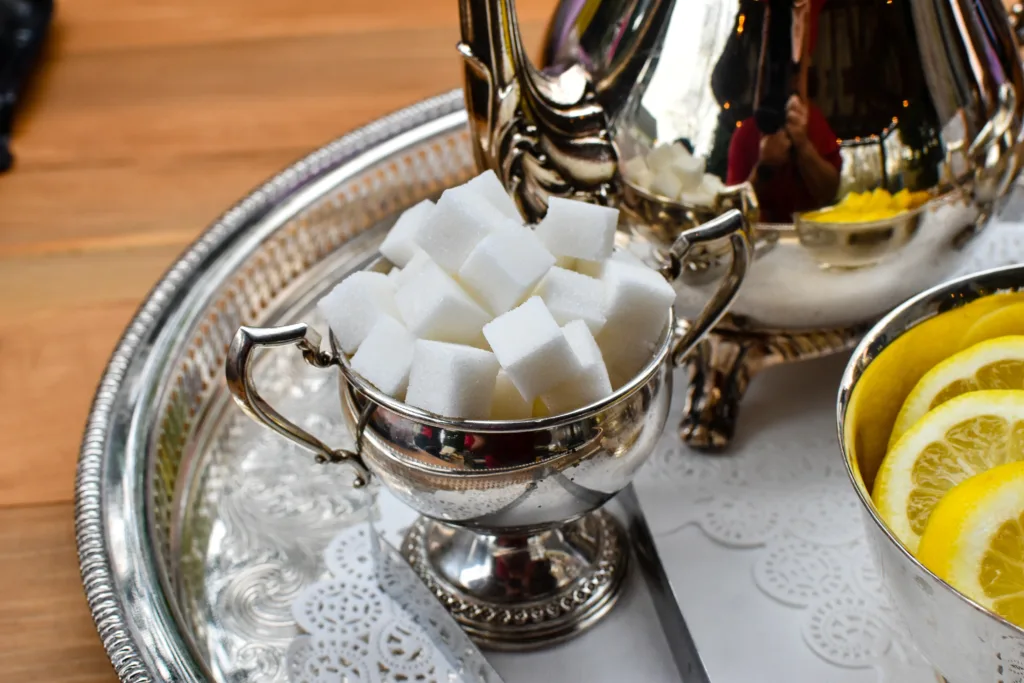Sugar is a substance that is commonly found in our diets and is known for its sweet taste. It is a type of carbohydrate that provides energy for our bodies. There are different types of sugars, but the simplest sugar is glucose.
Glucose is a monosaccharide, which means it is made up of a single sugar molecule. It is the primary source of energy for our cells and is the preferred source of fuel for our bodies. When we consume carbohydrates, such as fruits, vegetables, and grains, our bodies break them down into glucose.
Glucose is also known as blood sugar because it is the sugar that is measured in blood sugar tests. It is essential for our bodies to maintain stable blood sugar levels to ensure proper functioning. Our bodies have mechanisms in place to regulate blood sugar levels, such as the hormone insulin.
Other monosaccharides include fructose and galactose. Fructose is commonly found in fruits and is also known as fruit sugar. Galactose is found in dairy products. Both fructose and galactose can be metabolized into glucose in our bodies.
Disaccharides are made up of two monosaccharide sugars bound together. The most common disaccharide is sucrose, which is commonly known as table sugar. Sucrose is made up of glucose and fructose. Lactose is another disaccharide that is found in dairy products and is made up of glucose and galactose. Maltose is a disaccharide made up of two glucose molecules.
It’s important to note that while sugar can provide energy, excessive consumption of sugar can have negative effects on our health. Consuming too much sugar can lead to weight gain, tooth decay, and an increased risk of chronic diseases such as diabetes and heart disease. It’s recommended to limit our intake of added sugars and opt for healthier sources of carbohydrates, such as fruits, vegetables, and whole grains.
Sugar is a type of carbohydrate that provides energy for our bodies. The simplest sugar is glucose, which is a monosaccharide and the preferred source of fuel for our cells. Other types of sugars include fructose and galactose, which can be metabolized into glucose. It’s important to consume sugar in moderation and prioritize healthier sources of carbohydrates in our diets.
What Is The Simplest Form Of Sugar?
The simplest form of sugar is glucose. Glucose is a monosaccharide, which means it is made up of a single sugar molecule. It is the primary source of energy for the body and is commonly found in foods like fruits, vegetables, and honey.
Glucose is also known as blood sugar because it is the sugar that is measured in blood sugar tests. It is easily absorbed into the bloodstream and transported to cells throughout the body, where it is used as fuel for various biological processes.
Other monosaccharides include fructose and galactose. Fructose is naturally found in fruits and is often used as a sweetener in processed foods. Galactose is found in dairy products and is metabolized into glucose in the body.
Disaccharides, on the other hand, are made up of two monosaccharide sugars bound together. Some examples of disaccharides include sucrose (table sugar), lactose (milk sugar), and maltose (found in grains and beer).
Glucose is the simplest form of sugar and is the body’s preferred source of energy. It is a monosaccharide that is easily absorbed into the bloodstream and used by cells for various metabolic processes.

What Is An Example Of A Simple Sugar?
An example of a simple sugar is fructose. Fructose is a type of carbohydrate that is naturally found in fruits and honey. It is a sweet-tasting sugar that provides energy for the body. Fructose is easily digested and absorbed by the body, and it can be used as a quick source of fuel. Other examples of simple sugars include glucose and lactose. Glucose is the primary source of energy for our cells and is commonly found in foods like bread, pasta, and potatoes. Lactose is a sugar found in milk and dairy products.
What Are The 6 Simple Sugars?
The six simple sugars, also known as monosaccharides, are glucose, fructose, galactose, mannose, ribose, and xylose. These sugars consist of a single sugar molecule and are the basic building blocks of carbohydrates. Each of these sugars has a distinct chemical structure and is naturally occurring in various foods.
1. Glucose: This is the most common and important sugar in the body. It is the primary source of energy for cells and is found in fruits, vegetables, and honey.
2. Fructose: This sugar is naturally found in fruits, vegetables, and honey. It is the sweetest of all sugars and is commonly used as a sweetener in processed foods.
3. Galactose: Galactose is found in milk and dairy products. It is often combined with glucose to form lactose, which is the sugar present in milk.
4. Mannose: Mannose is found in fruits, especially cranberries. It is also a component of some complex carbohydrates found in plant cell walls.
5. Ribose: Ribose is a sugar that is a component of RNA (ribonucleic acid) and is involved in various biological processes. It is found in all living cells and plays a crucial role in energy metabolism.
6. Xylose: Xylose is found in small amounts in fruits, vegetables, and some grains. It is commonly used as a sweetener in sugar-free products.
These simple sugars can be combined to form more complex carbohydrates, such as disaccharides (two sugar molecules) and polysaccharides (multiple sugar molecules). They provide energy to the body and are essential for various biological processes.
What Are The 4 Types Of Simple Sugar?
The four types of simple sugars are:
1. Glucose: Glucose is the primary source of energy for the body. It is commonly found in fruits, vegetables, and honey. Glucose is also produced during the process of breaking down carbohydrates in the body.
2. Fructose: Fructose, also known as fruit sugar, is naturally present in fruits and some vegetables. It is the sweetest form of sugar and is commonly used as a sweetener in processed foods and beverages.
3. Sucrose: Sucrose, also known as table sugar, is a combination of glucose and fructose. It is commonly used as a sweetener in baking and cooking. Sucrose is derived from sugar cane or sugar beets.
4. Lactose: Lactose is the sugar found in milk and dairy products. It is composed of glucose and galactose. Lactose is broken down by an enzyme called lactase in the body, and some people may be intolerant to lactose if they lack this enzyme.
These four types of simple sugars play important roles in our diet and are found in various foods and beverages we consume. It is important to consume them in moderation as excessive intake of sugar can have negative health effects.

Conclusion
Sugar is a type of carbohydrate that provides the body with energy. It comes in various forms, including glucose, fructose, sucrose, and lactose. Glucose is the simplest form of sugar and is the body’s preferred source of energy. It is commonly found in blood sugar tests and is metabolized from other sugars like fructose and galactose.
Other forms of sugar include disaccharides, which are made up of two monosaccharide sugars bound together. These include sucrose, which is commonly known as table sugar, lactose, which is found in dairy products, and maltose, which is commonly found in grains and cereals.
It is important to note that while sugar is a source of energy, it is also important to consume it in moderation. Excessive consumption of sugar has been linked to various health issues, including obesity, diabetes, and dental problems. Therefore, it is recommended to limit the intake of added sugars and focus on obtaining carbohydrates from nutritious sources such as fruits, vegetables, and whole grains.
Understanding the different types of sugars and their impact on our health can help us make informed choices about our dietary habits. By consuming sugar in moderation and opting for healthier sources of carbohydrates, we can maintain a balanced and nutritious diet.
